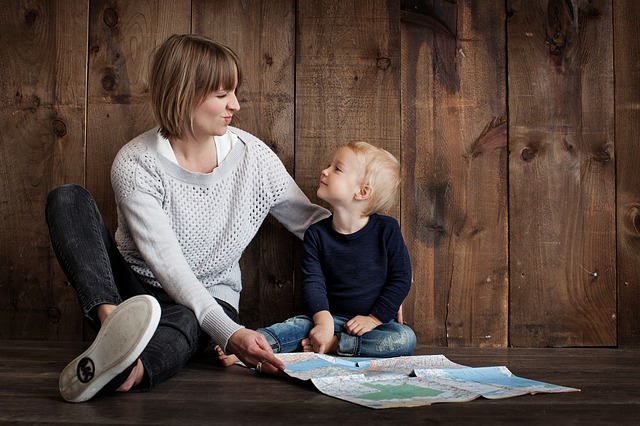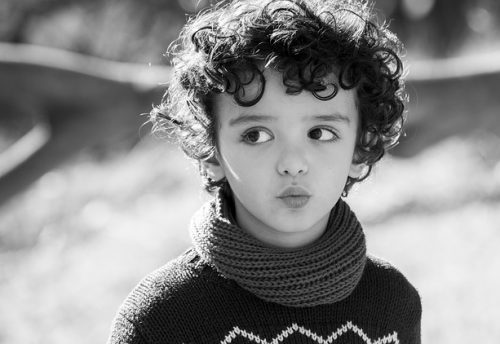
5 Secrets to Raise a Creative Child
5 Secrets to Raise a Creative Child
In this article, you will learn about 5 secrets to raise a creative child. Creativity is the ability to generate or make up stuff that is exceptional and often has practical or artistic value. It also way to look for new solutions to old, and more importantly new hitches. When your child becomes an adult in the workplace, he will always encounter problems that may not be solvable through the old ways, and therefore needs thinking “outside the box”. A child who is used to thinking creatively will be a feat in his profession and will be sought after by companies. Or better yet, he may even employ people to work on his innovative creative project! A large part of being creative is genetic. Scientists claim that some people are born more creative than others, and creativity seems to come more naturally to some kids than others. It is an innate talent, and the naturally talented person has an easier time acquiring the same level of expertise than the lesser talented person. Also, the talented person tends to master quickly what exists, so he can move on to working beyond what already exists and build something new. Highly creative people are found to exhibit personality traits such as being intelligent, non-conformist and unconventional, and open to experience. They have strong egos, and even have a mild form of madness. They also tend to have a broad range of interests. For example, highly creative scientists are found to be highly interested and engaged in the arts.
Here are 5 Secrets to Raising a Creative Child –
1. Let Them Go the Extra Mile :
Assign “extension work” for homework assignments. Creative students have a need to expand their thinking to new dimensions. Urge your child to do something that adds to the assignment with a new and innovative idea. For example, if she is told to assemble an insect collection, ask her to write a paragraph explaining the process and offering improvements that might make the assignment better. Who knows? If it’s good enough, you might even share it with your child’s teacher, who may incorporate it into future requirements.
2. Teach Your Child to Control their Emotions :
Anger, sadness, and disappointment can affect us as adults just as much as they can affect our children. But we can still teach our kids lessons about how to cope with negative emotions and how not to waste too much energy on them. When your child is in a calm mood, teach them the following trick: first breathe in deeply through your nose, then out through your mouth, and count to five. If you see that your child is worked up about something, remind him or her about these three steps and perform them together.
3. Teach Them What Constitutes Good Behaviour and Instil Your Family Values in Them :
The majority of parents look upon their children’s successes at school or in sport somewhat reverently. Why not take the same attitude towards their ethical behavior? It’s important to clearly define your own family values and make sure your child adheres to them in both word and deed. Does he or she behave respectfully? Do they keep their promises? How do they behave towards their peers or with those who’ve upset them? Don’t forget who your child gets their examples from.
4. Help Your Budding Artist Stay Cantered :
From Vincent van Gogh to Sylvia Plath, the stereotype of artists being mentally imbalanced pervades the western culture. It’s possible that these examples of talent paired with emotional disturbance are simply coincidence. It’s also possible that the agony of a painful childhood expresses itself best through art. It’s certainly conceivable that people who break with society to follow their own drummer are more likely to come unmoored. And it may even be possible, as some spiritual adepts say, that people who open themselves fully to the creative energy of the universe, without the emotional and spiritual maturity to handle it and without the guidance of a spiritual teacher, can be overwhelmed by the power that comes through them. Regardless of the reasons for the association between creativity and mental health issues, it can be argued that creative people may well need extra help to learn how to stay centered. You can protect your budding artist by helping her develop structures that support her.
5. Make Creative art Play Easy :
If your child can initiate art activities without your help, he’s more likely to create art when the spirit moves him. The best gift we ever received was a small plastic tray for our daughter to put her paper in as she worked, but a designated cookie sheet with a rim works just as well. (You’ll need one for each kid, and to wash them after messy projects.) Kids can do art with no worry since crayon marks, glitter, playdough, etc all have a contained space. You still need rules (“Playdough stays on the tray”, “Mom has to supervise pouring the glitter” “We always put newspaper down when we paint”) but creative arts become more a part of your child’s everyday life, as they become “his.”






Leave a Reply